Know Your Process Analyzers: Raman Analyzers
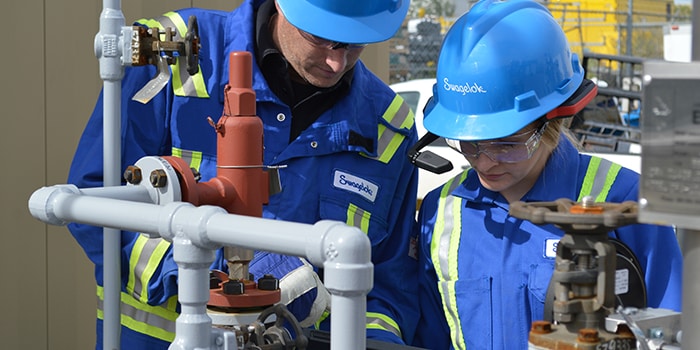
Know Your Analyzer Types: Raman Analyzers
Mike Strobel, Business Development Manager, Swagelok
Know Your Analyzer

- Raman Analyzer
Coming Soon... - Photometric IR & UV Analyzers
- Process Density Analyzers
- Process Oxygen Analyzers
- Process Moisture Analyzers
Accurate process analysis is essential for any chemical plant or refinery. Your ability to validate process conditions and fluid composition is key to maintaining optimal levels of efficiency and profitably. The deeper your insight into your process fluids, the better your ability to optimize them with the right controls.
For these reasons, process analyzers are a vital tool in today’s plants. But there are several types of process analyzers, and each has its unique advantages.
That’s why we’re developing a blog series to discuss different types of analyzers and their ideal applications. First, we’re exploring Raman process analyzers, a relatively new type of process analyzer that uses Raman spectroscopy to provide detailed information about your fluid’s chemical composition.
What is a Raman Analyzer and How Does It Work?
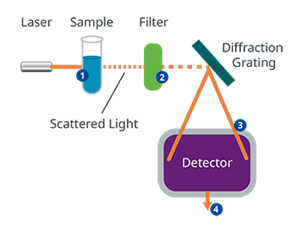
A visualization of Raman sample analysis.
- Laser illuminates sample
- Raman analyzer filters out Rayleigh light scattering
- Raman-scattered light enters detector for measurement
- Raman fingerprint is assigned value(s)
Raman analysis is a nondestructive process that provides detailed information about your liquid, solid, or gas sample’s chemical composition. A monochromatic laser in the visible, near infrared, or near ultraviolet range is used to illuminate a sample of unknown composition. The light excites the molecules of a substance, causing those molecules to move from their ground vibrational state to a virtual vibrational state.
During this process, elastic and inelastic scattering of light occurs. Elastic scattering, or Rayleigh scattering, means the light photons released have the same amount of energy as the incident light photons. Inelastic or Raman scattering refers to two occurrences: The first is when a molecule is excited to a virtual state and retains some of the energy absorbed from the light. The emitted scattered light photon, therefore, has slightly less energy than the incident photon and a longer wavelength. The second occurs when a molecule already excited to a higher vibrational state returns to its ground state after excitation. The emitted light photons gain energy and now have a shorter wavelength.
The Raman spectrum created by the light scattering process is often described as the Raman fingerprint of a sample. Just like our fingerprints, each Raman fingerprint is unique and assigned a value or values based on mathematical models generated for the measurement application. The models can be user-generated in a lab, but many manufacturers generate theoretical models to reduce implementation time. Notably, careful modeling and proper application of the models are vital to the accuracy of the Raman measurement.
Advantages of Raman Analyzers
Raman spectroscopy provides an effective means to continuously monitor process health. It can verify chemical composition at each stage to help you ensure processes are running optimally. Rework and waste can be kept to a minimum, as a well-designed Raman system allows for near-instantaneous decisions to be made based on the analysis results. Raman spectroscopy can also monitor finished or nearly finished products to minimize reprocessing of off-spec products.
Raman analyzers require little to no sample conditioning, helping to reduce startup and ongoing maintenance costs.
There are additional operational benefits too, including:
- Little to no sample conditioning required, helping to reduce startup and ongoing maintenance costs
- Minimal to no sample transport time, greatly reducing time delays and providing a near real-time analysis
- No manual calibration required
- Minimal maintenance needs over the course of their lifetime, allowing you to focus labor on other tasks
Disadvantages of Raman Analyzers
The primary disadvantage of Raman analyzers is their reliance on models to deliver measurement results. Gas mixture components tend to be easily differentiated in linear regression analysis, however, liquid analysis is much more challenging. The development of liquid models can take months, or even years, which can delay implementation and cost more upfront.
Additionally, Raman spectrometers are less sensitive than other techniques and can typically measure down to only a few hundred parts per million. This means that Raman analysis can lack precision, making it less ideal for certain applications that require extremely precise measurements.
Common Applications for Raman Analysis
Raman spectrometers are suitable for a wide range of process applications.
Gasoline blending.
Raman spectrometers have proven quite effective in gasoline blending applications. Octane rating, boiling points, and Reid Vapor Pressure (RVP) can all be effectively measured using Raman spectroscopy in gasoline blending. With fast response and accurate analysis, operators can, for example, maintain the optimal octane rating of their final product while minimizing giveaway.
Natural gas quality measurement.
Hydrocarbon components in natural gas can vary from only trace amounts to nearly 100% of the mixture. Inert gases present in the natural gas mixture can reduce its energy density, and therefore its value. Raman spectroscopy is a good choice for fast and accurate natural gas measurement as it doesn’t require separation of the components like the traditional gas chromatography method.
Hydrotreating and hydrocracking.
Hydrogen is of critical importance in these refining operations. Raman spectroscopy is a good solution when a full composition analysis is required. After a pressure swing absorption unit, real-time Raman analysis can help operators ensure proper hydrogen removal before suboptimal product has flowed downstream. Additionally, Raman spectrometers can generally measure at higher pressures than other methods. This increases the likelihood of returning the fluid to process rather than flare, helping to reduce operating costs.
Drilling exploration.
Optimizing the drilling process and supporting safety for operators are critical as drillers search for oil and gas reserves. Increasing drilling speeds requires faster measurement response that cannot be achieved by traditional measurement technologies, such as gas chromatography. The Raman spectrometer’s ability to simultaneously measure both hydrocarbon and nonhydrocarbon molecules also decreases the need for additional analytical instrumentation.
Mud logging.
Mud logging is the measurement and cataloging of rock cuttings, mud, and gases that are driven to the surface during borehole drilling. Monitoring the composition and characteristics of the mud is critical to optimize the drilling process and check that an explosive mixture of gases is not present. The continuous monitoring provided by the Raman spectrometer helps operators make informed decisions that increase efficiency and help maintain the safety of operators.
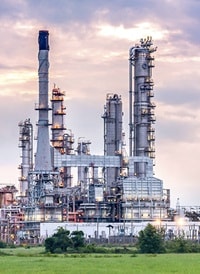
Consider a Raman spectrometer being used to continuously monitor the chemical composition of refinery fuel gas, commonly a mixture of natural gas and recovered flare gas.
The quality of the fuel gas can quickly change on the composition of the recovered flare gas, leading to inefficiencies in equipment using the fuel gas mixture. Specifically, boilers can experience flame instability when hydrogen levels spike in the fuel gas.
The short response time of a Raman analyzer measuring the hydrogen content in the fuel gas allows the fuel gas mixture to be monitored continuously and changes to be quickly implemented, minimizing hydrogen-rich fuel gas from reaching process equipment and improving process efficiency.
***
Your process analysis needs are specific to your operations, and Raman process analyzers may be one option to help you meet them. If you’re unsure whether this type of system is the right fit or if you’d like to dive deeper, our specialists are available to discuss further. They can help evaluate your needs, determine the most impactful locations for process analysis, and guide you toward the most effective technologies for fluid analysis for your business.
Explore Swagelok Reference Point to uncover insights on how to improve your sampling practices in all parts of your facility, and stay tuned for the next article in our process analyzer series.
Related Articles
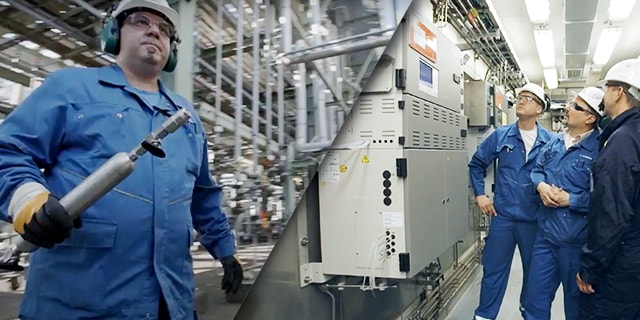
Analyzing Your Sampling Needs
Trying to determine whether grab sampling or online analysis is the best option to monitor your process conditions? We put together a convenient checklist to help guide you to a solution that suits your operations.
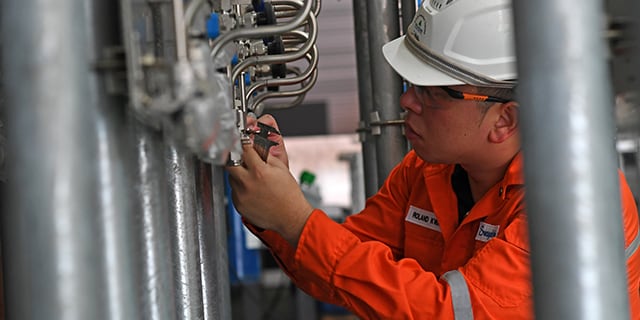
3 Rules for Analyzer Accuracy
Learn to avoid three common sampling system performance problems that can lead to analyzer inaccuracies, costing you time and money.
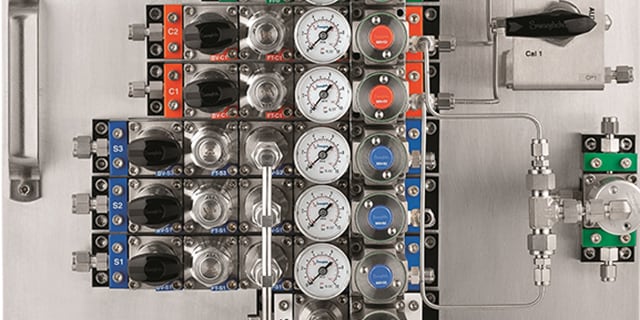
Tips to Maintaining a Representative Sample in an Analytical Instrumentation System
Maintaining a representative sample within an analytical instrumentation system can be difficult. Learn how to identify major issues and avoid complications associated with a compromised representative sample from the experts at Swagelok.

